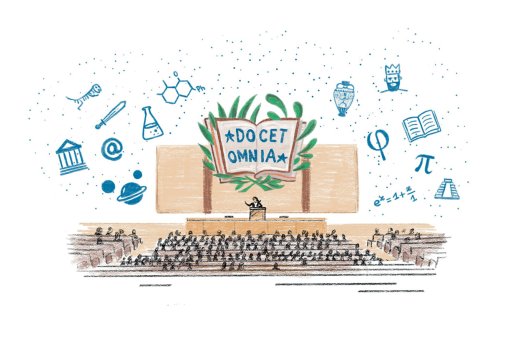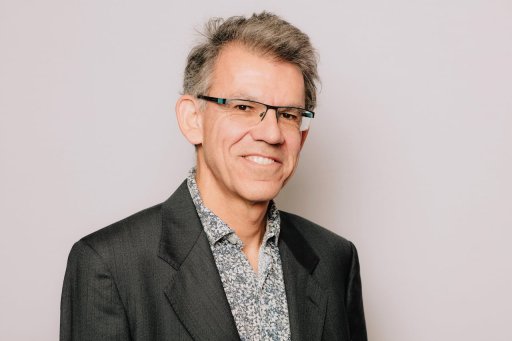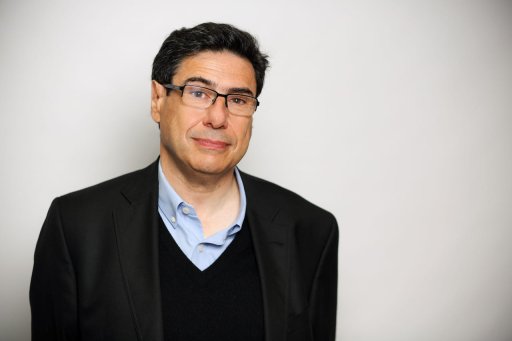Interview with Laurent Coulon

Laurent Coulon, holder of The Civilization of Pharaonic Egypt chair at the Collège de France, demonstrates through his work and his commitment how Egyptology is a living science.
As an Egyptologist, you advocate an Egyptology that is " open ". How would you define Egyptology, and what do you mean by the term " open " ?
Laurent Coulon : The word " egyptology " was coined in the 19th century and is defined by a well-defined object : the study of the Egypt of Pharaonic civilization, from the end of the 4th millennium B.C. to the Roman period, in the 4th century A.D. This is the lifespan of the model of Pharaonic kingship and hieroglyphic writing. Egyptology has a particular societal resonance in our country, linked to the fascination exerted by ancient Egypt ; it can therefore appear as a singular discipline. I draw on the tradition of the illustrious scholars who have nurtured it, but I also advocate a comparative approach to Egyptian phenomena : all the human sciences - history, anthropology, art history, literature and philosophy - must be able to grasp this material.
Why did you choose Egyptology ? What were your original motivations ? What are they today ?
Many Egyptologists have been fascinated by ancient Egypt since childhood, through readings, exhibitions and lectures. This was not my case. I had a literary education, up to and including the agrégation in classics. During my studies, when I arrived in Paris, I discovered other horizons. I took a wide range of readings at the Sorbonne and the École normale supérieure, and was attracted by Egyptian literature and the modernity of its works, which seemed to be little known. What's more, I had the strong impression that Egyptology offered the opportunity to come face to face with a vast amount of unpublished documentation and untapped sources. Contact with the Egyptian field, notably as a volunteer for my military service in Egypt on the Karnak site, reinforced my choice.
With hindsight, the motivation linked to the possibility of new discoveries has remained intact. In 1993, when I arrived at Karnak, the Franco-Egyptian center had just discovered a tomb of Osiris, which was the first example of catacombs of this type. Since then, at least two other similar tombs have been found. This means that in the space of thirty years, our knowledge of the cult of Osiris has been revolutionized by these new materials, which is quite exceptional ! Another example : with my colleague Philippe Collombert, we managed to find the beginning of the Astarte papyrus, a story imported from the Near East, by connecting the known part to a papyrus fragment dated to pharaoh Amenhotep II, which was... in the BnF. Thanks to this research, a whole page of Egyptian literature has been rewritten ! One of my colleagues used to say that you're an Egyptologist when you're able to publish an unpublished document, which is an indispensable task for those who really want to tackle the complexity of Egypt !
Beyond this aspect, I'm driven by the desire to transform this data into a discourse accessible to other researchers. Anthropologists, in particular, sometimes give the impression that Egypt is a blind spot, so abundant or unprepared is the material " " for comparative questioning. Some encounters have not taken place, perhaps due to the fault of Egyptologists. The Egyptian example must play a more important role in these comparative analyses.
A large part of your work is devoted to Egyptian religion. What are its key features ?
Egyptian religion is a polytheism " like the others ", if you can call it that : its operation is based on a diversity of gods, to which is added a geographical diversity. Each Egyptian city had a local god, associated with a triad (the god - his spouse - their child). Around this core, theologians developed cosmogonies placing their locality at the center of the world. In this varied landscape, there were of course constants, notably a recurring pattern for the process of creation. For the Egyptians, the Universe was born from an uncreated expanse from which emerged a demiurge who in turn gave birth to groups of gods, laying the foundations of religious life.
Ritual practices also played an essential role in ancient Egypt. The rite is what organizes the relationship between men and the gods, a kind of contract between humanity and the divine world : if the rites are not performed correctly, at the right frequency, the whole human society is in peril. The chief ritualist is the Pharaoh king, the privileged intermediary in the " house of the god ". For, in the Egyptian conception, after a mythical time when men and gods cohabited, this modus vivendi broke down and the gods withdrew into the heavens. From then on, the only possible point of contact with them became the temple, through the divine image located at the back of the sanctuary. Images thus played a fundamental role in Egyptian religion, acting as a medium for communicating with the gods. Finally, what fascinates, and perhaps confuses, is the appearance of most Egyptian gods, with human bodies and animal heads. Animals can also act as intermediaries with the divine.
Your particular interest in the cult of Osiris has led you to better characterize this Egyptian religion. Why ?
What's special about the cult of Osiris is that it can be seen to emerge and evolve over almost the entire Pharaonic period. He can also give the image of a god " apart ", through his human appearance and his destiny as a mortal god. What particularly interested me was what can be called " the osirianization " of Egyptian religion. From the end of the 2nd millennium, the god Osiris was gradually integrated into the religious landscape, and the Osiris-Isis couple (his sister and wife) was to be found in all sanctuaries. The Osirian myth was used to unify Egypt's territories, for the benefit of political power, without denying their diversity. The presence of relics of Osiris in different places, like so many parts of his dismembered body according to the myth, shows the recognition of each of these local religions. In other words, the " Osirian phenomenon " is not a step towards monotheism, but a dimension added to polytheism, a unified vision that supports the political myth of Pharaonic kingship. Another interesting development is that the pharaoh, traditionally associated with Horus, the heir of Osiris, was gradually identified with Osiris himself in pharaonic ideology.
In addition, what I've helped to shed light on is the phenomenon of the multiplication of Osiris' forms and representations, corresponding to functions intended to meet the population's concrete needs. Each form of Osiris was assigned a specific name, associating it with a power, in a defined place. Osiris was thus considered to be the god " sauveur " : special prayers were addressed to him for a birth or to combat illness. Osiris, master of the realm of the dead, took over the territory of temples and earthly divinities, and not just that of necropolises. These places dedicated to him in temples act as an airlock to an Osirian afterlife. The relationship between the living and Osiris became more visible, and his role took on a new dimension in society.
What remains to be discovered about Egyptian religion ? What sources are available ?
There are still many texts on papyrus that provide new data on local religious variations, in regions that are still little known. From an archaeological point of view, there are an enormous number of places of worship yet to be discovered. The status of Osirian images has yet to be fully analyzed, and I'm focusing part of my research on this subject. The various images of Osiris, such as the Djed pillar or the " fetish " from Abydos, have often been interpreted as interchangeable motifs of the god. However, they have a history and are associated with specific cult ceremonies, which need to be contextualized over a long period of time to better understand why they are used in a given environment.
As far as sources are concerned, texts and iconography are complemented by archaeological remains and the furniture found in excavations, even if it's completely devoid of inscriptions. At Karnak, in the chapel of Osiris Ounnefer (master of food), we discovered a ceramic jar positioned at the foundation of the building. By comparing it with images of jars appearing on ritual papyri from Abydos, I was able to demonstrate that it was a specific model, with no apparent utilitarian character, but linked to the needs of worship. A hypothesis that I was able to have validated by a ceramics specialist. This is what interdisciplinary teams are all about: we open up new perspectives by providing a concrete vision of the cult practices that were implemented.
The other aspect of your research concerns Egyptian rhetoric, the importance of which you have shown. In what way ?
In describing Ancient Egypt as a " civilization of the written word ", we have often overlooked an important dimension: the art of oratory. Literary texts, as well as the official texts inscribed on pharaonic monuments, bear witness to the essential role played by speech : the pharaoh's decisions are staged in the form of dialogue between him and his courtiers, and the power and qualities of speech are often emphasized. The importance of rhetoric can also be gauged from the laudatory epithets on funerary stelae. When eulogizing a deceased person, it's common to point to his or her eloquence and the accuracy of his or her words. In a courtly society such as Pharaonic royalty, this was one of the ways of distinguishing oneself and gaining the all-important royal favor. There is a double valorization : of silence (one must know how to keep quiet, control one's emotions), but also of speech (having the right formula at the right time, what the Egyptians call the " tjes ", the " nœud "). Conversely, as Egyptian wisdom has it, " a slip of the tongue at court is like a bad turn of the rudder at sea. "
Several literary works reveal, moreover, that the Egyptians had perceived the discrepancy between discourse and reality, contrary to the naive vision that is widespread. It has long been claimed that, for the Egyptians, the word was equal to the thing, as if they believed that magic governed everything ; that pronouncing a word was enough to bring into existence the thing it designates. This is only true in certain contexts, and rhetoric was conceived by the Egyptians precisely as a means of exploiting the gap between reality and discourse. The Egyptians' relationship with truth was therefore complex. This reflection on discourse and its use for political ends was present long before the rise of Greek civilization.
What links can be established between the Egyptology you practice and the contemporary world ? What does Egyptology have to say to us, women and men of the 21st century ?
Ancient Egypt is everywhere in contemporary society : in museums, pop culture, magazines... This civilization is very present in our daily lives, especially in France where the passion for the land of the Pharaohs is long-standing and deep-rooted. This creates a shared interest that drives Egyptological studies. This is not without its misunderstandings and identity disputes, when certain communities try to appropriate the past. A source-based historical and anthropological approach is the key to escaping this kind of discourse. For my part, I also like to see how Egyptian civilization defined its own modes of representation of the world, but also its universalizable traits, or at least those that reveal certain mechanisms still at work in our society, past or present. I'm thinking here of the practices of court society, which can be compared to those of Louis XIV, or of the way rhetoric is constructed in certain speeches.
It's amusing to rediscover modes of expression that were already at work 4 000 years ago. It's not uncommon to read the following type of speech from a high-ranking person : " When I came to office, I found everything ransacked, and everything was put back in order thanks to my action ! " without forgetting the " protestations of veracity " : " What I'm telling you is true, there are no lies here ! " Historians are at a loss to assess the degree of reality and exaggeration in these words ! The rhetoric of the providential man cannot be heard without a smile when we think of the political discourse of our time.
Through several projects, such as LEAD*, you have committed yourself to digital humanities for Egyptology. What's at stake ?
Over the past two centuries, Egyptology has accumulated a phenomenal amount of data. In Egypt, more than two hundred international research teams are deployed in the field every year. The objects collected alone number in the thousands. This data cannot be preserved and exploited without computer tools. But while digital technology makes it possible to inventory and make available immense quantities of documents, it is only on condition that we have common reference systems for description and inventory, in order to create corpora that are as complete and readable as possible. The challenge is also to make this data open and shareable. This is what we are striving to do in the LEAD database, which plans to put online the corpus raisonné of all private late-period statuary.
Until September 2023, you directed the Institut français d'archéologie orientale (IFAO) in Cairo. Has the demand for Egyptian works to be repatriated to Egypt over the last ten years had an impact on Egyptological research ?
I'm confident in the willingness of both sides to engage in dialogue. With thirty-five active missions per year, Franco-Egyptian cooperation in Egyptology is going very well. These missions are possible because the Egyptian Ministry of Tourism and Antiquities allows access to the field. At the same time, my team at the IFAO and I have sought to develop the training of Egyptian archaeologists and Egyptologists. In this way, we are trying to create a common framework that will enable shared research and heritage preservation objectives.
Interview by Catherine de Coppet









